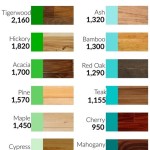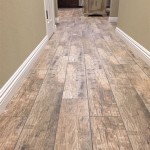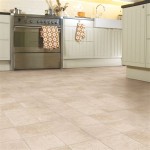Cork Flooring Installation: A Comprehensive Guide for a Perfect Finish
Cork flooring has gained popularity as a sustainable and durable flooring option. Its unique texture, sound absorption, and thermal insulation properties make it a great choice for both residential and commercial spaces. However, installing cork flooring requires meticulous attention to detail to ensure a flawless finish. This comprehensive guide will delve into the essential aspects of cork flooring installation, empowering you with the knowledge and techniques needed for a successful project.
1. Preparation and Acclimation
Before embarking on the installation, it is crucial to prepare the subfloor and acclimate the cork tiles. The subfloor should be clean, level, and dry with a moisture content below 12%. Cork tiles should be acclimated to the installation environment for at least 48 hours to prevent buckling or cracking.
2. Adhesive Selection
The type of adhesive used depends on the substrate and the type of cork flooring. For concrete subfloors, a moisture-resistant adhesive is recommended. For floating cork floors, a specialized adhesive specifically designed for cork tiles is required.
3. Installation Methods: Glue-Down and Floating
There are two primary installation methods for cork flooring: glue-down and floating. Glue-down cork tiles are adhered directly to the subfloor using specialized adhesive, providing a durable and stable installation. Floating cork floors consist of interlocking tiles that snap together, eliminating the need for glue. This method is ideal for uneven subfloors or areas where moisture is a concern.
4. Expansion Gaps and Transitions
To accommodate expansion and contraction, expansion gaps must be left around the perimeter of the flooring and around obstacles like walls and columns. Transition strips are used to connect different flooring types or to cover the expansion gap between the cork flooring and other surfaces.
5. Finishing Touches: Sealing and Accenting
Once the cork flooring is installed, it is essential to apply a sealer to protect it from moisture and wear. Sealants enhance the durability and aesthetics of the flooring, making it easier to clean and maintain. Additionally, accent borders or decorative strips can be added to enhance the overall design.
6. Maintenance and Care
Cork flooring requires regular cleaning and maintenance to preserve its appearance and extend its lifespan. Sweeping, vacuuming, or damp mopping with a mild detergent are recommended. Avoid using harsh chemicals or abrasive cleaners. Periodic resealing may be necessary to protect the finish from wear and moisture.

Complete Guide To Cork Flooring Installation Deerfoot Carpet

Cork Flooring Tiles Or Floating Floor Icork

How To Install A Cork Floor Young House Love

How To Install A Cork Floor Young House Love

Cork Flooring Pros And Cons Is It The Right Choice For You

Complete Guide To Cork Flooring Installation Deerfoot Carpet

What Is Cork Floating Flooring Cancork

Installing Glue Down Cork Tiles Installation Lay How Cancork

Discontinued Cali Cork Flooring Floated Lock Installation

How To Install Cork Flooring
Related Posts








